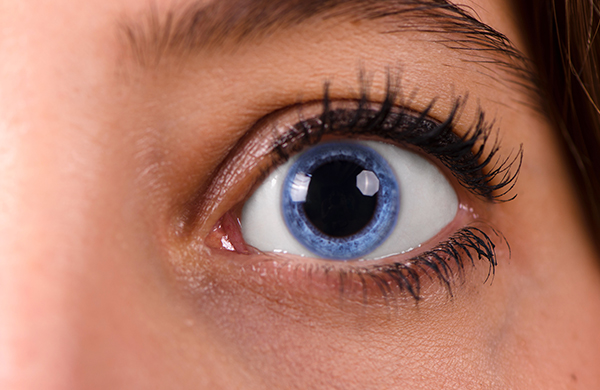
Although going to the eye doctor is undeniably good for your eyes, the actual exam itself can feel like the ophthalmologist or optometrist is declaring war on your poor eyeballs. From getting your pupils dilated with stinging eye drops to having the doctor shine a flashlight directly into your skull, the barrage of tests feels like an assault—yet it’s all necessary. But why? We wanted to find out. Here are the answers to some of your most common eye-exam questions.
Do I have to get my pupils dilated during an eye exam?
If it’s a comprehensive eye exam, the doctor should dilate (widen) your pupils using specialized eye drops. This allows them to look for diseases by examining the inside of the eyeball, including the retina and the optic nerve, which is located at the back of the eye.
How long will the effects last?
Pupils begin to look larger about 20–30 minutes after the eye drops are applied. People with light eyes (blue, hazel, green) generally dilate faster than people with dark eyes (brown, cyborg red), and light-eyed people often stay dilated for longer. In general, pupils stay big and black for 4–6 hours, but dilation can last up to 24 hours, depending on the type of drops used.
Can I drive with dilated pupils?
Dilation can result in blurry vision and a sensitivity to light, so you should arrange for someone else to drive you home from your appointment. You also might want to bring sunglasses or pick up a disposable pair from the front desk of the doctor’s office.
What are the eye drops that turn eyes yellow?
These aren’t dilating drops, but drops that numb your eyes. The numbing agent is combined with a yellow dye that glows under a blue light. These drops are used in glaucoma tests, during which the doctor touches an instrument with a blue glowing probe to the eye in order to measure the pressure inside the eye. (Elevated pressure can be a sign of glaucoma.) The drops ensure you don’t feel any pain.
Why is the doctor shooting a puff of air into my eyes?
The air-puff test is another way to check for glaucoma and elevated internal eye pressure. It’s strange but doesn’t hurt, as the doctor simply puffs a mini gust of air into your eyes while you stare at a light inside a machine. The machine calculates your eye pressure.
Is it necessary for the doctor to shine a flashlight into my eyes?
Although it feels like the doctor is forgoing their Hippocratic Oath and trying to blind you, this test is necessary for determining how pupils respond to light. The correct response is to constrict in size. If pupils dilate or don’t respond, that could be a sign of an underlying problem.
Do I ever need to go to the eye doctor if I have perfect vision?
Yes, but you’re probably OK to hold off until you’re 40. That’s when changes in vision usually start to occur, such as presbyopia—the official term for when someone needs reading glasses. It’s also when early signs of eye disease, including glaucoma, start to show up, and that’s why the American Academy of Ophthalmology recommends getting a baseline eye exam at this time.
Of course, some people have lesser degrees of nearsightedness or farsightedness without realizing it. If you squint often or commonly experience eyestrain and headaches, you should book an appointment with an eye doctor, especially if you drive or operate machinery.
Check out related reads on the The Guide:
Is LASIK eye surgery permanent? How well does it work? Does it hurt? A squeamish Groupon beauty editor had the same questions and sought out the answers.
Glasses used to be lame. Now, they’re cute, and possibly The Future.

